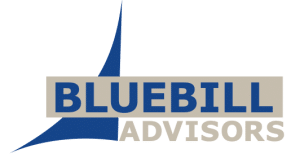Ajay Agarwal from Bain Capital Ventures predicts that because of the confluence of big data and marketing Marketing is the next big money sector in technology and will lead to several new multi-billion dollar companies. His post is succinct and convincing, but there are additional reasons to believe he is correct.
Marketing spending more on IT than IT
Ajay opens his post with a quote from Gartner Group: “By 2017, a CMO will spend more on IT than the CIO”. It is difficult to judge this prediction without evaluating the supporting research, but it doesn’t sound unreasonable and the trend is unmistakable. Our own experience as conference organizers and consultants offers strong support for the trend. We cover the use of web, mobile, and content technologies for enterprise applications, and our audience has historically been 50% IT and 50% line of business or departmental. Since at least 2008 there has been a pronounced and steady increase in the percentage of marketers in our audience, so that 40% or more of attendees are now either in marketing, or in IT but assigned to marketing projects – this is about double what it was in earlier years. While web content management vendors have moved aggressively to incorporate marketing-focused capabilities and are now broadly positioned as hubs for customer engagement, the real driver is the success of the web. Corporate web sites have become the organizations’ new front door; companies have recognized this; and marketers are demanding tools to manage the visitor experience. Even during the peak of the recession spending on web content management, especially for marketing applications, was strong.
“Cloud” computing and workforce demographics have also beefed up marketers’ mojo. The increased ability to experiment and deploy applications without the administrative overhead and cost of IT or of software licenses has encouraged marketers to learn more about the technology tools they need to perform and helped instill the confidence necessary to take more control over technology purchases. A younger more tech-savvy workforce adds additional assertiveness to marketing (and all) departments. Now if only marketers had more data scientists and statisticians to work with…
Big data and big analytics
Big data has not caused, or contributed very much, to the increase in marketing spending to-date. Certainly there are very large companies spending lots of money on analyzing vast amounts of customer data from multiple sources, but most companies still don’t have enough data to warrant the effort of implementing big data technologies and most technology vendors don’t yet support big data technologies at all, or sufficiently. I agree with Ajay though that the “several multi-billion dollar” marketing technology companies that may emerge will have to have core big data processing and analytic strengths.
And not just because of the volume. One of the main reasons for the enterprise software bias for back office applications was that front office applications beyond simple process automation and contact data collection were just too difficult because they required processing unstructured, or semi-structured, data. Big data technologies don’t address all the challenges of processing unstructured data, but they take us a long way as tools to manage it.
The level of investment in this space is much greater than most realize. Ajay is right to invest in it, but he is not alone.
